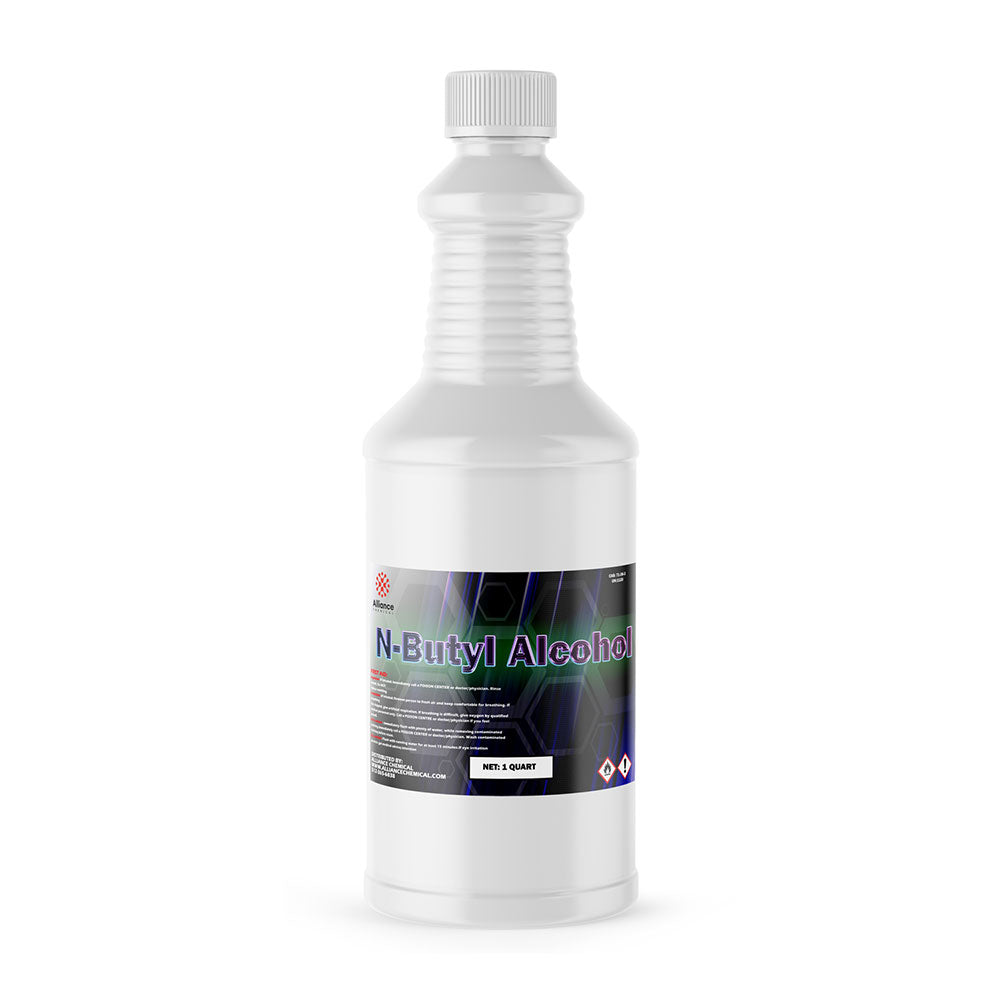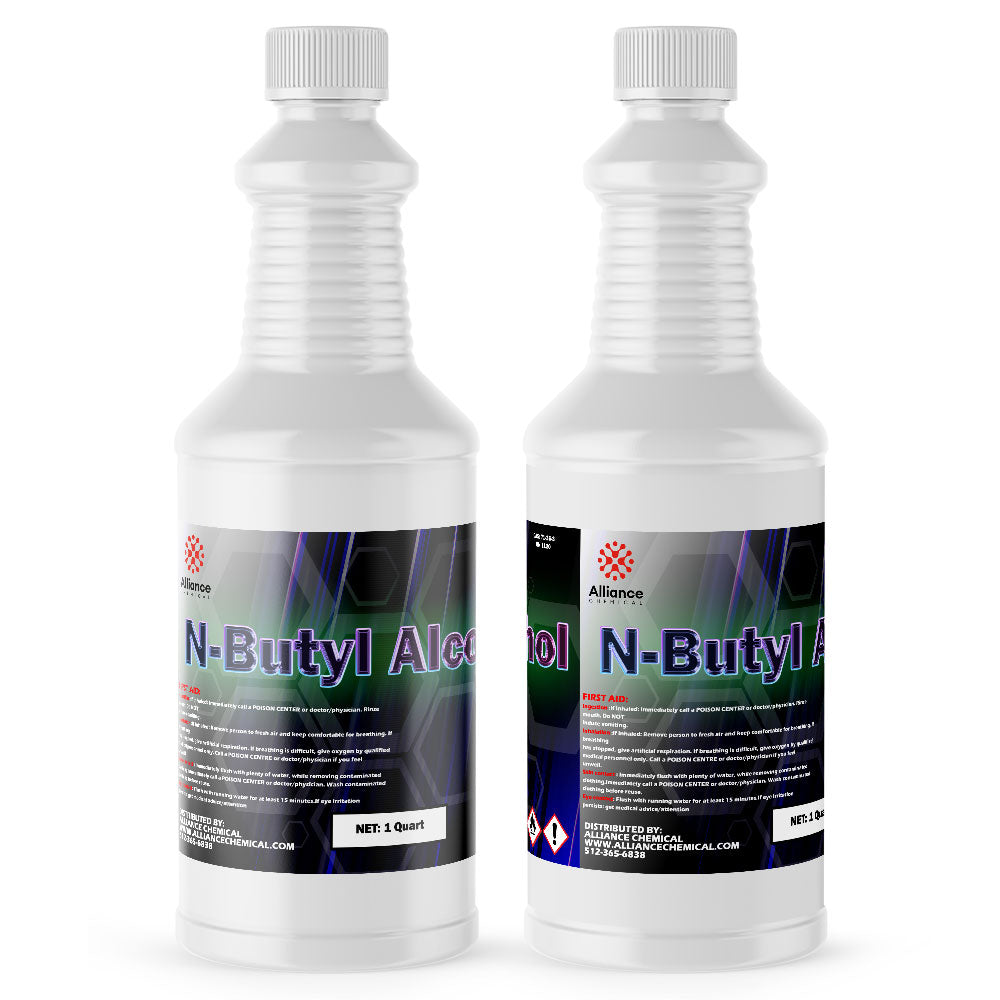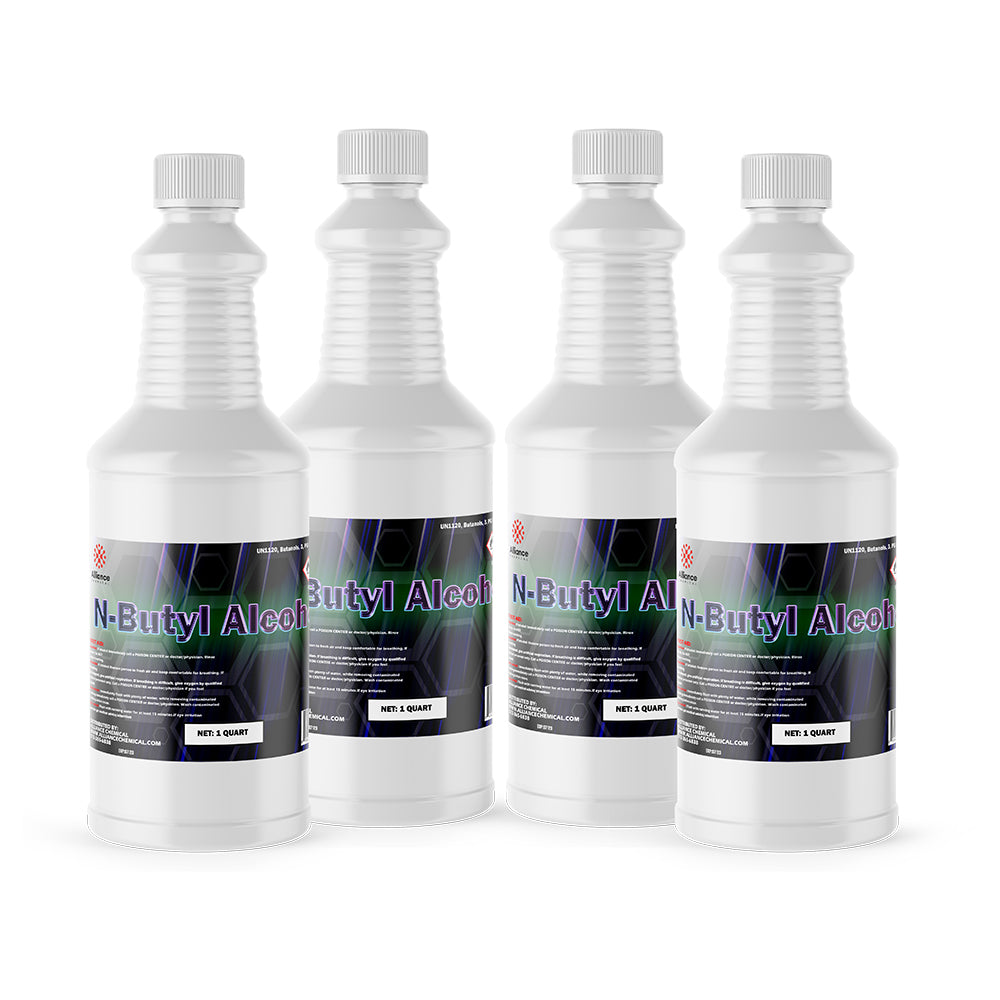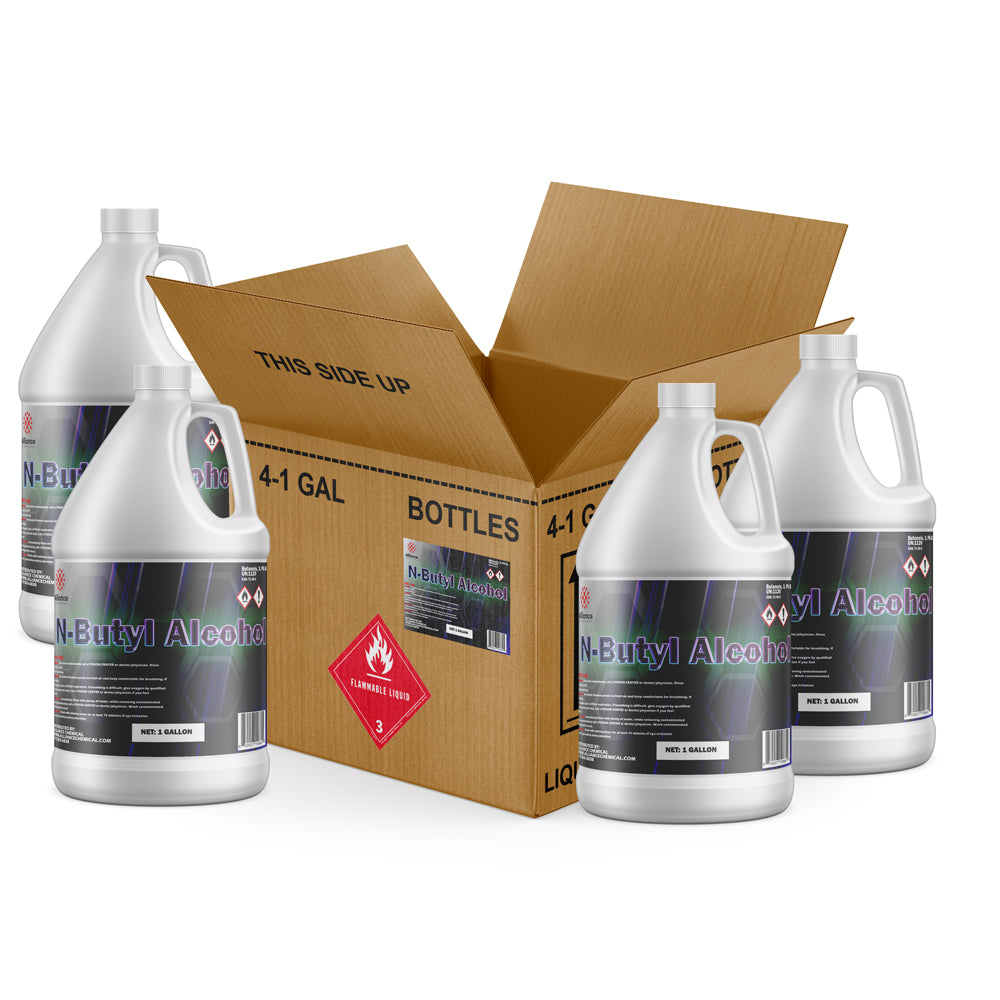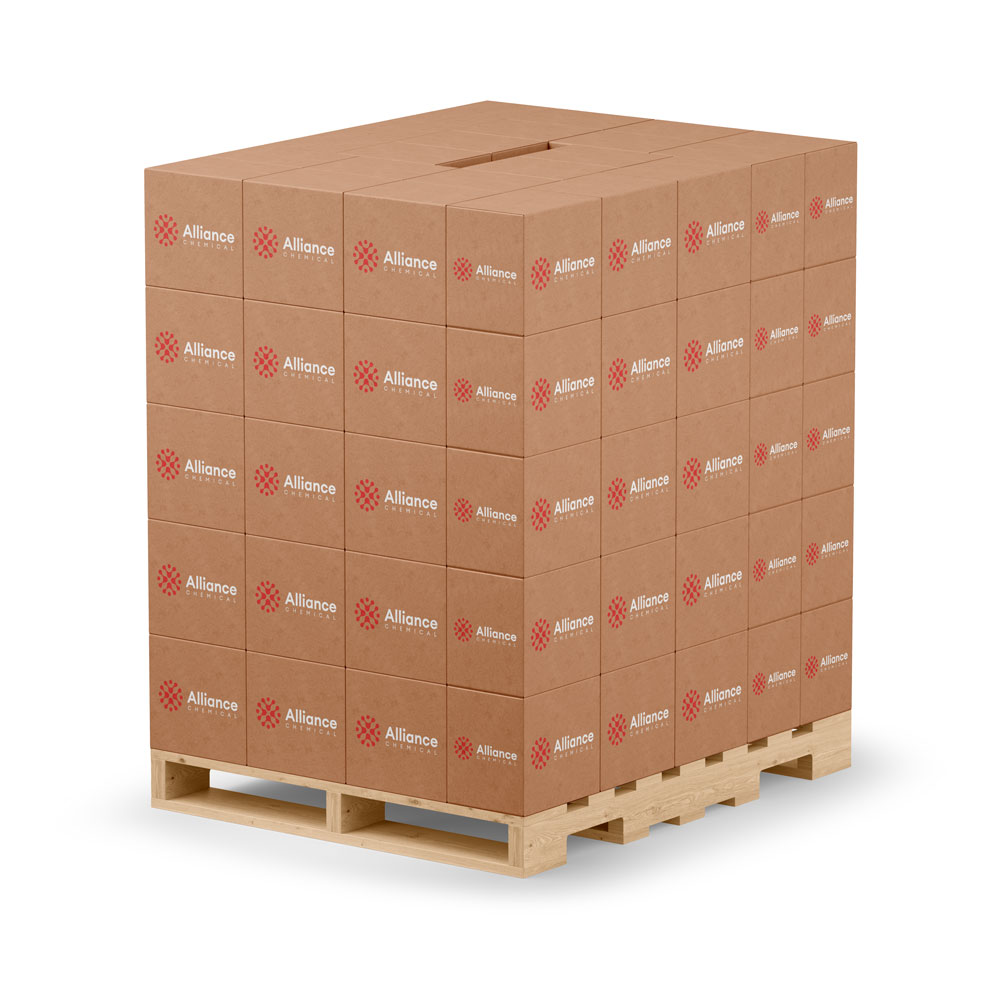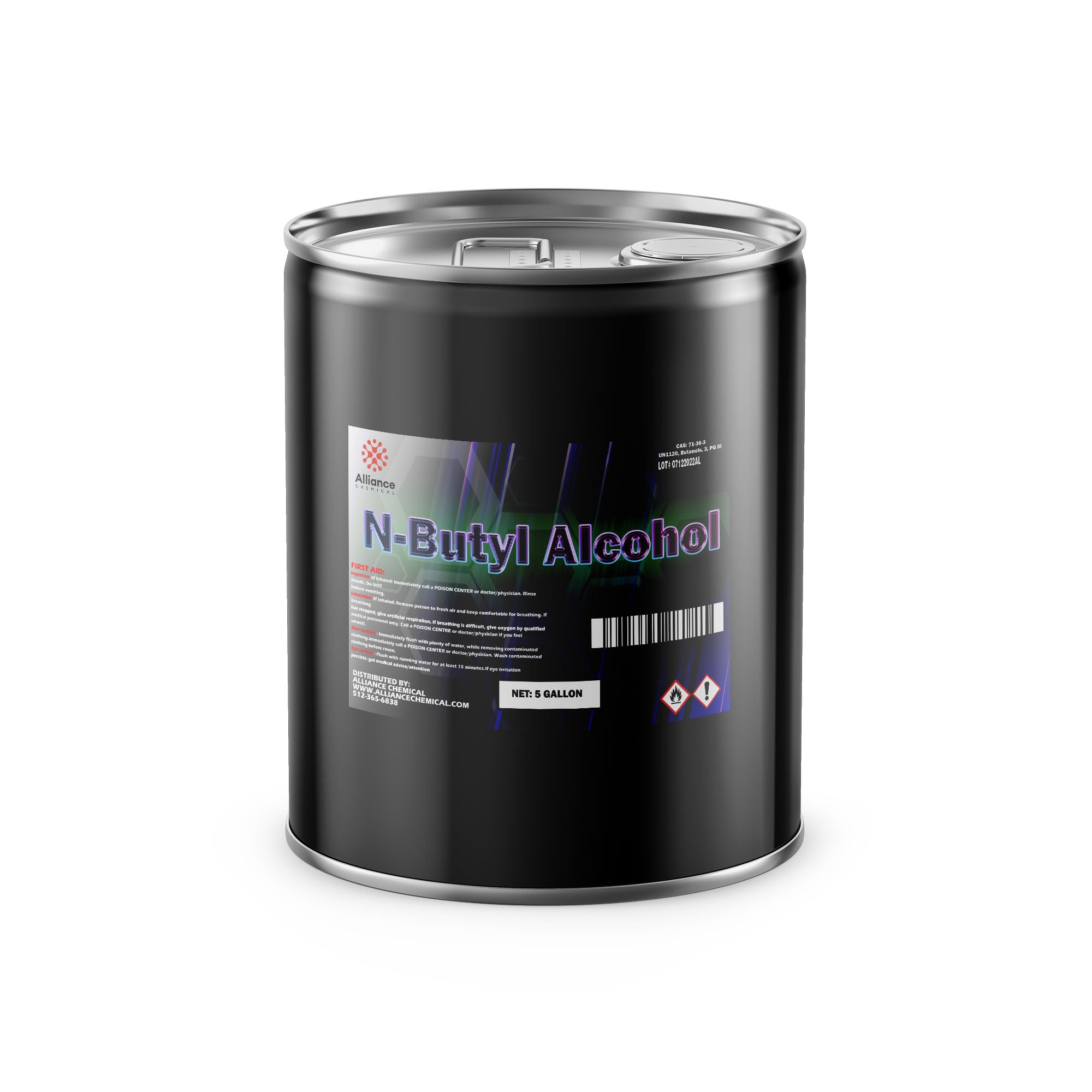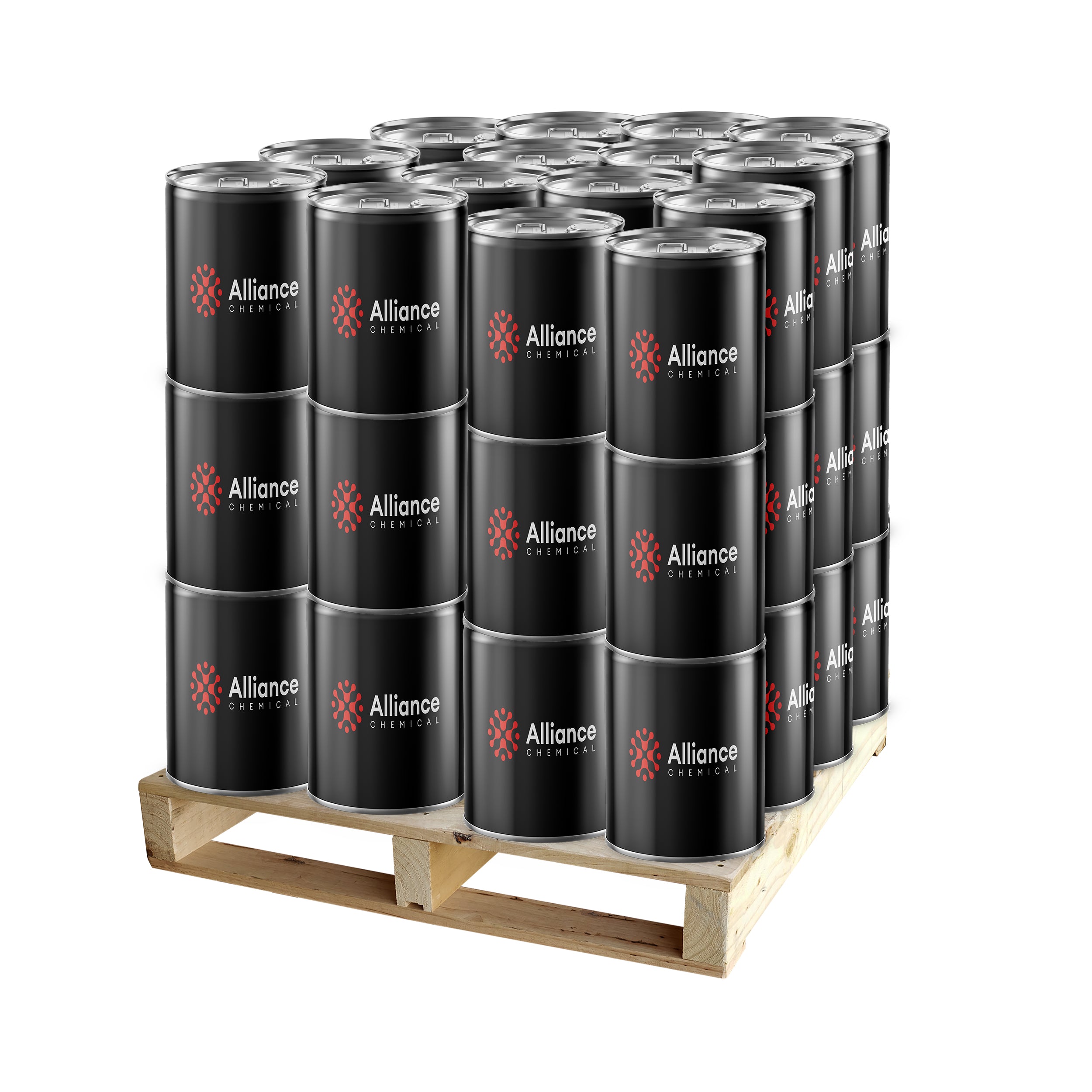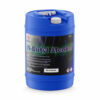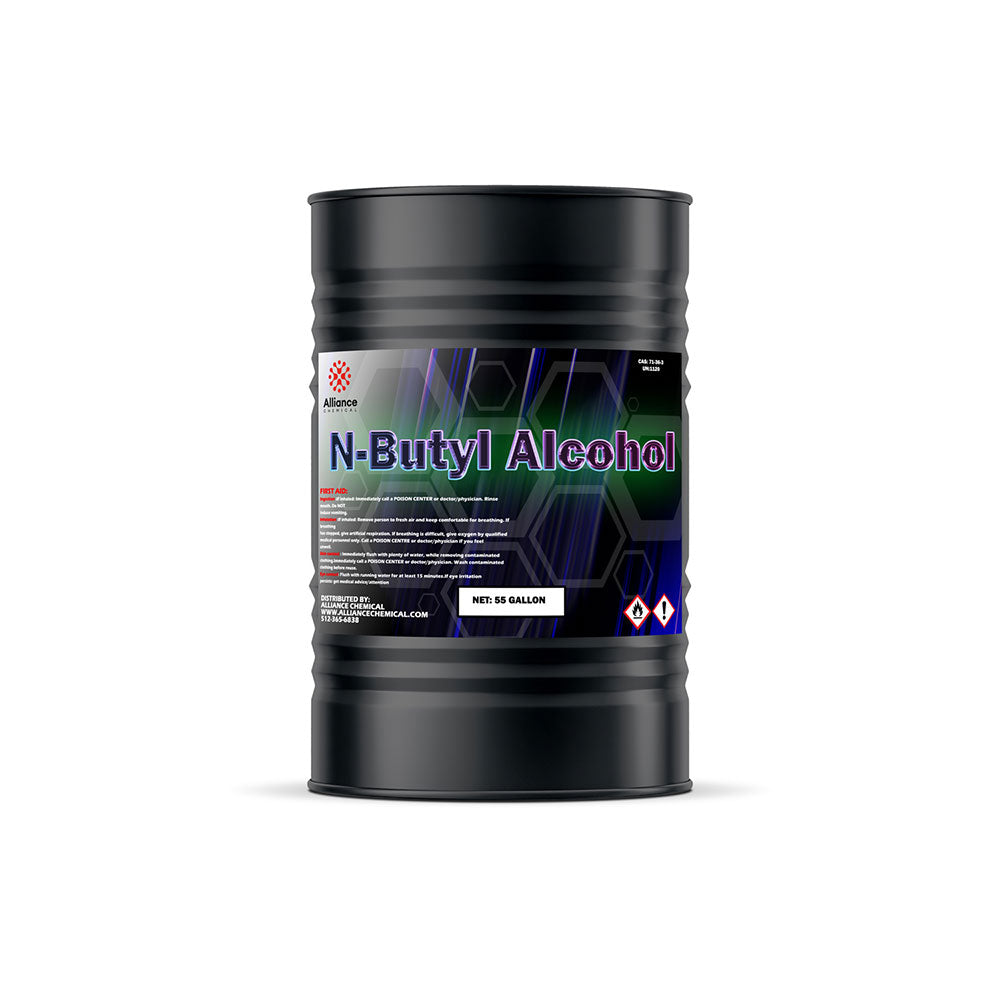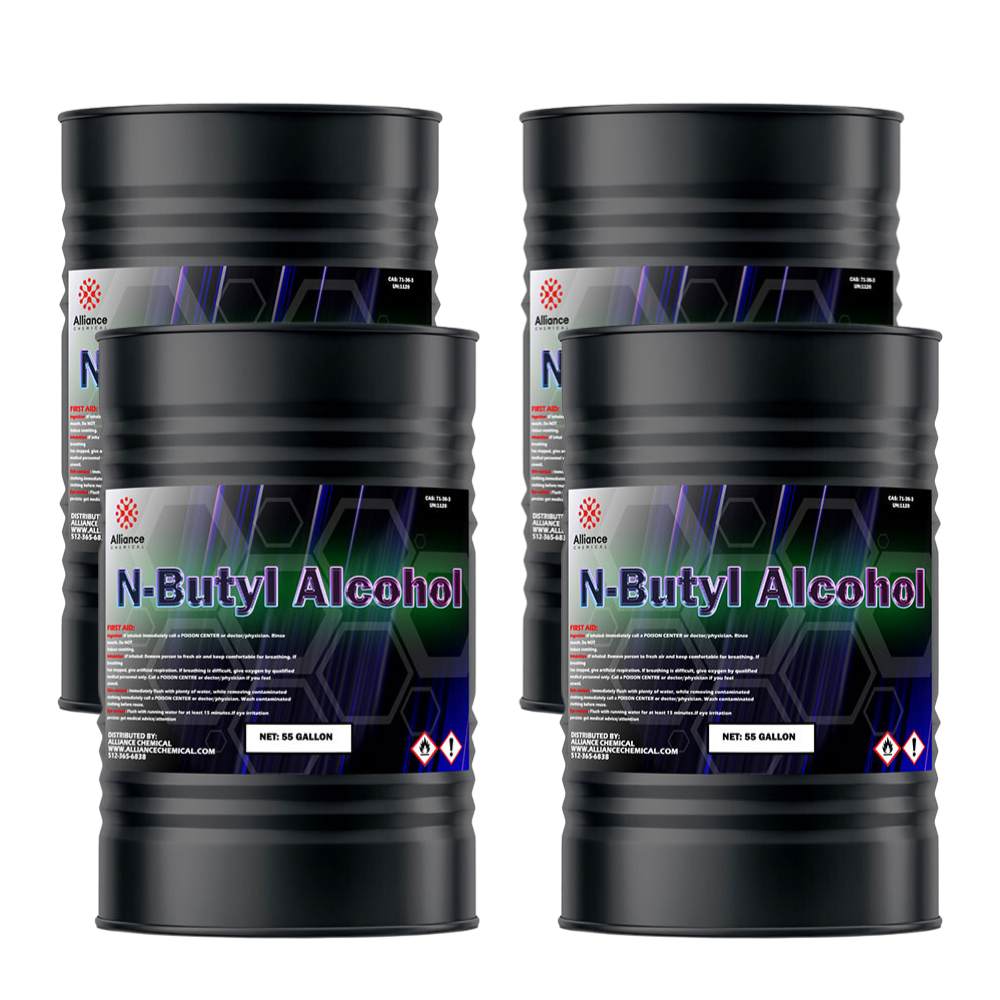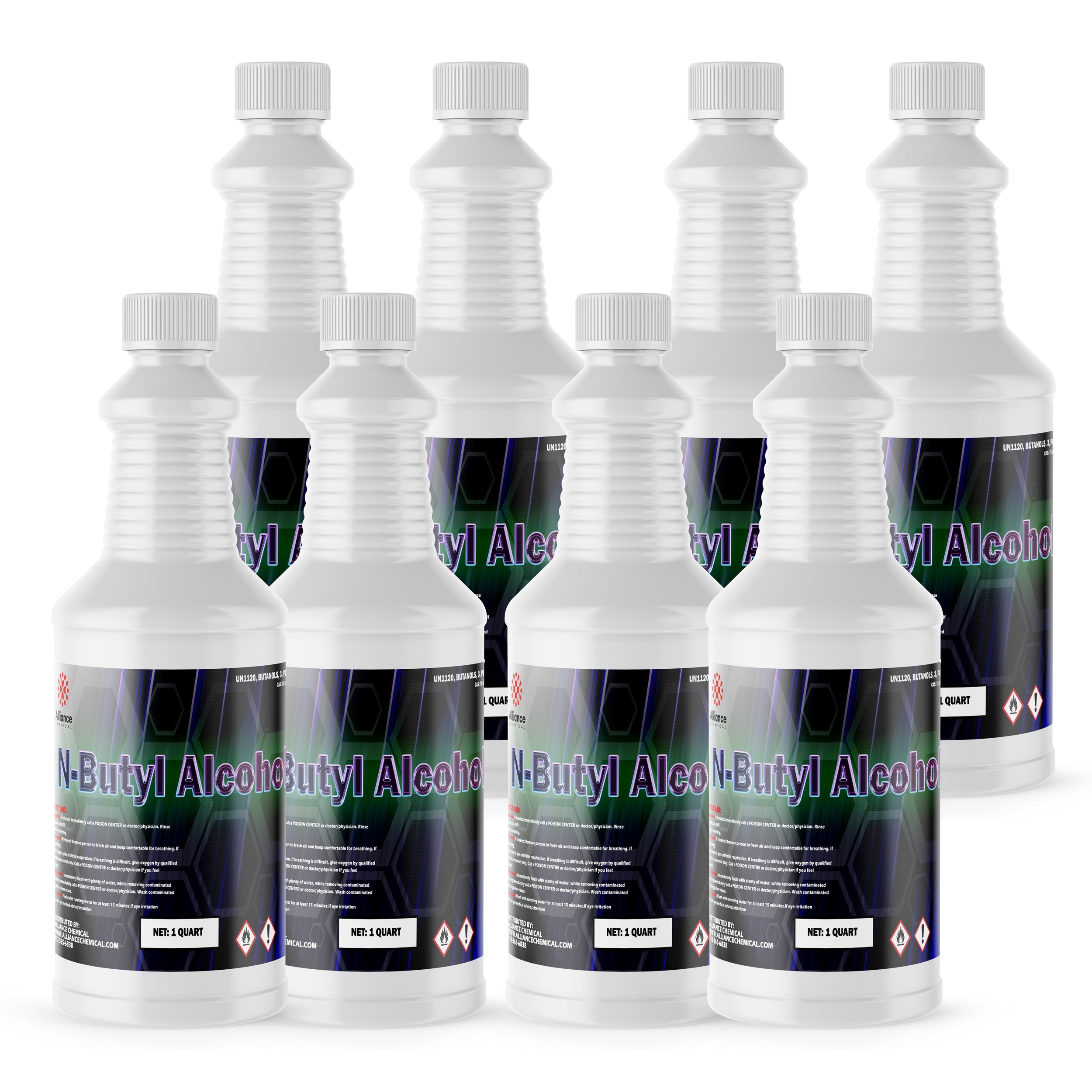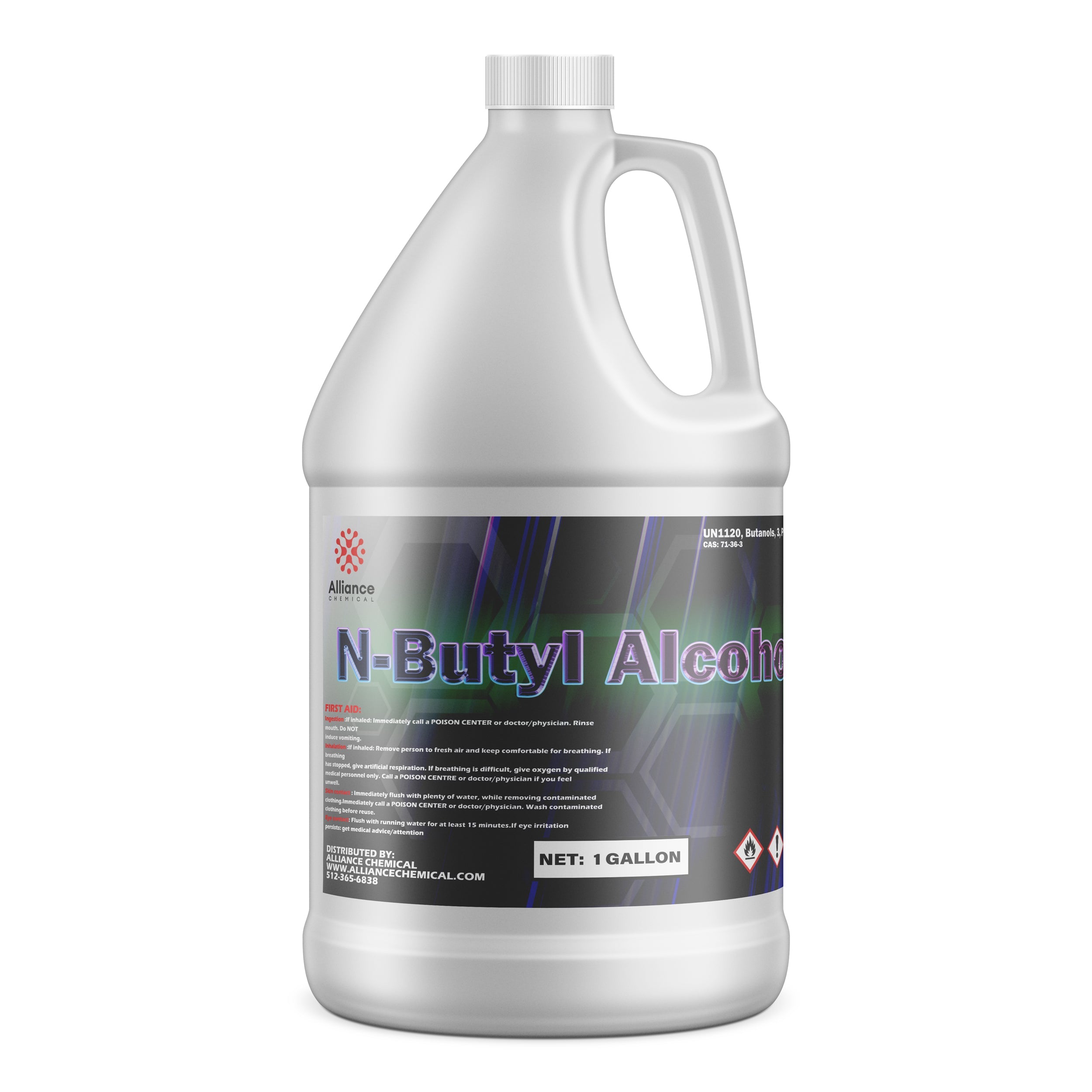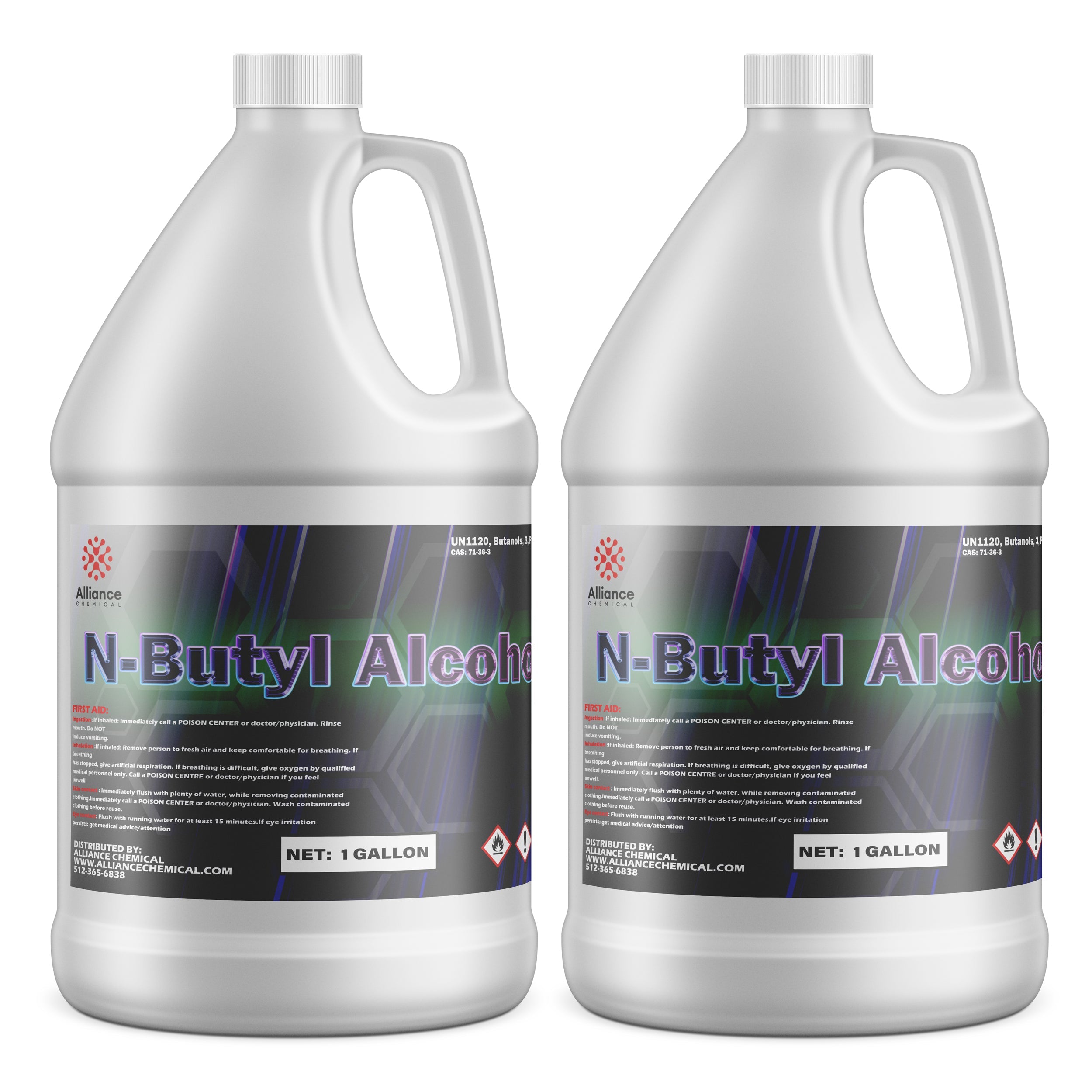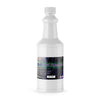N-Butyl Alcohol
Category : Alcohols
$18.62
Unit price
Quantity
Ask a question
Product Overview
N-Butyl Alcohol (C₄H₁₀O) is a colorless, low-viscosity primary alcohol characterized by its four-carbon chain and terminal hydroxyl group. This technical grade solvent is widely used in industrial formulations due to its effective solvency for a broad range of resins, polymers, and additives. Typical assay weight percent ranges from 99.0 to 100.5, with a typical purity around 99.8% as determined by titration with standardized NaOH. The product exhibits a mild alcohol odor and a flash point of 35°C, making it suitable for controlled processing environments where solvent evaporation rates and solvency are critical factors.
In addition to its solvent capabilities, N-Butyl Alcohol serves as a key intermediate in the production of esters such as butyl acetate and finds utility in cleaning formulations, paint formulation, and analytical methods as a mobile phase component in high-performance liquid chromatography (HPLC). The product is supplied with a specification package that includes stringent checks for color (APHA/Hazen), trace metals, halides, and residuals to ensure compatibility with precision manufacturing processes and quality control protocols. Storage and handling considerations emphasize maintaining an inert or controlled atmosphere to preserve stability and minimize oxidation.
Key Properties
- Appearance: Colorless liquid
- Chemical Formula: C₄H₁₀O
- Molecular Weight: 74.12 g/mol
- Boiling Point: 117.7°C
- Specific Gravity (20°C): 0.805–0.815 (typical 0.81)
- Color (APHA/Hazen): Max 15 (typical 8)
- Residue after Ignition (wt %): Max 0.01% (typical 0.001%)
- Chloride (ppm): Max 20 (typical 5)
- Nitrate/NO₃ (ppm): Max 25 (typical 5)
- Ammonium/NH₄ (ppm): Max 10 (typical 1)
- Sulfate/SO₄ (ppm): Max 50 (typical 5)
- Phosphate/PO₄ (ppm): Max 20 (typical 2)
- Arsenic (ppm): Max 0.5 (typical 0.1)
- Heavy Metals (as Pb, ppm): Max 0.5 (typical 0.1)
- Iron (ppm): Max 5 (typical 1)
- Copper (ppm): Max 2 (typical 0.5)
- Manganese (ppm): Max 2 (typical 0.5)
- Nickel (ppm): Max 1 (typical 0.2)
- Lead (ppm): Max 0.2 (typical 0.05)
- Zinc (ppm): Max 2 (typical 0.5)
- Aluminum (ppm): Max 1 (typical 0.2)
- Chromium (ppm): Max 1 (typical 0.2)
- Cobalt (ppm): Max 0.5 (typical 0.1)
- Calcium (ppm): Max 200 (typical 50)
- Magnesium (ppm): Max 150 (typical 30)
- Potassium (ppm): Max 500 (typical 100)
- Sodium (ppm): Max 200 (typical 50)
Common Applications
- Solvent for Paints: Industrial formulation solvent capable of dissolving resins, binders, and additives to achieve uniform coatings and controlled evaporation rates.
- Intermediate in Chemical Synthesis: Key precursor in the production of butyl acetate and other esters used in coatings and plasticizers.
- Cleaning Agent: Effective solvent in industrial cleaning formulations for degreasing and surface preparation prior to coating or assembly processes.
- HPLC Mobile Phase: Widely used as a mobile phase component in analytical chemistry for reverse-phase separations and gradient methods.
- Extraction Solvent: Employed in extraction processes for isolating active pharmaceutical ingredients and related compounds in pharmaceutical development.
Safety Precautions
Handling and storage should follow standard flammable liquid protocols: store in a cool, well-ventilated area away from heat sources, and use containers compatible with hydrocarbons (HDPE or glass). Ensure adequate ventilation or local exhaust when handling to minimize inhalation exposure; wear appropriate PPE including chemical splash goggles, flame-resistant gloves, and protective clothing. Keep away from ignition sources and incompatible materials, particularly strong oxidizers and acids, to prevent hazardous reactions. The product is classified as Flammable Liquid and requires grounding during transfer to prevent static discharge.
Additional safety considerations include monitoring exposure and implementing emergency procedures in the event of spills or skin/eye contact. The SDS indicates hazard statements including H226 (flammable liquid and vapor), H319 (causes serious eye irritation), and H336 (may cause drowsiness or dizziness). In case of contact with eyes or skin, rinse with water and seek medical attention as needed; for inhalation, move to fresh air and seek medical care if symptoms persist; for ingestion, rinse mouth and avoid inducing vomiting, seeking medical advice if unwell. Transport is regulated as UN 1120, Butanol, Class 3, Packing Group II.
Benefits
✔ High Purity and Consistency – Technical grade specification with stringent QC parameters ensures reliable solvent performance across industrial processes and analytical workflows.
✔ Versatile Solvent Performance – Broad solvation capabilities for paints, coatings, resins, and pharmaceutical extracts support multiple manufacturing steps.
✔ Quality Control Compatibility – Comprehensive impurity profiling (halides, metals, and residuals) aligns with ASTM and USP-grade expectations where applicable, enabling traceable quality control.
| Property | Value |
|---|---|
| Molecular Weight | 74.12 g/mol |
| Formula | C4H10O |
| Grade | Technical |
| Flash Point | 35 |
| Form | Liquid |
| Solubility | Miscible with water, alcohols, and many organic solvents |
| Appearance | Colorless, volatile liquid with a characteristic odor |
| Melting Point | -89 °C |
| Boiling Point | 117 °C |
| Specific Gravity | 0.81 |
| Industry | Industrial, Chemical |
Compare Products
| Price |
|---|
| SKU |
| Rating |
| Discount |
| Vendor |
| Tags |
| Weight |
| Stock |
| Short Description |

